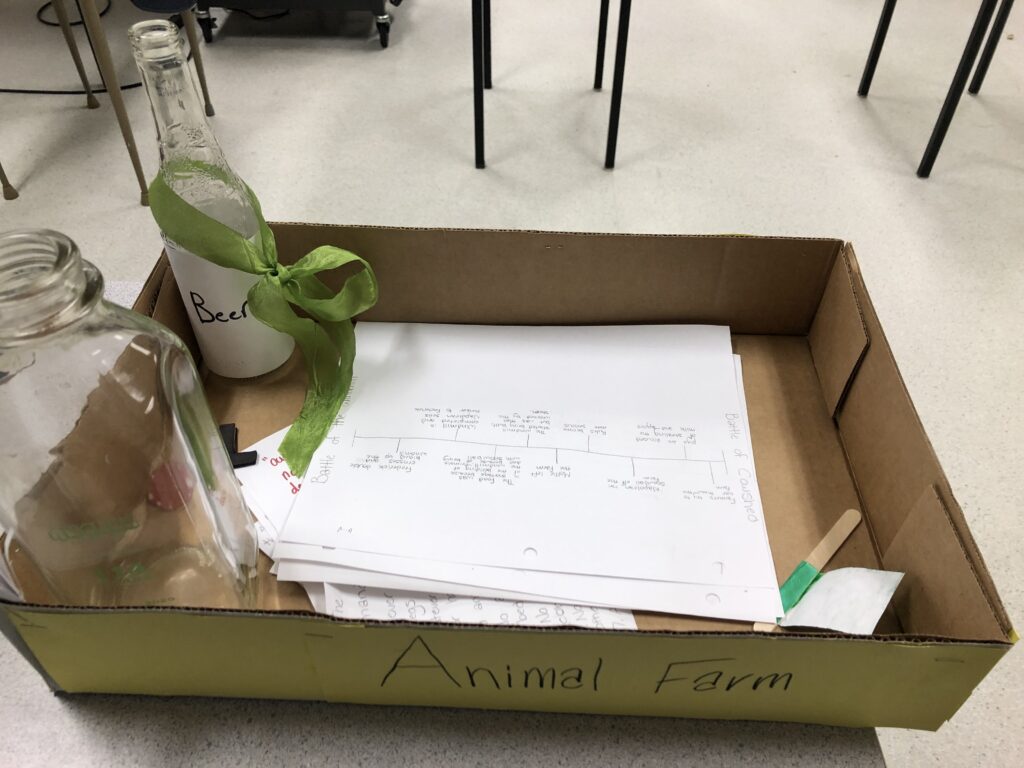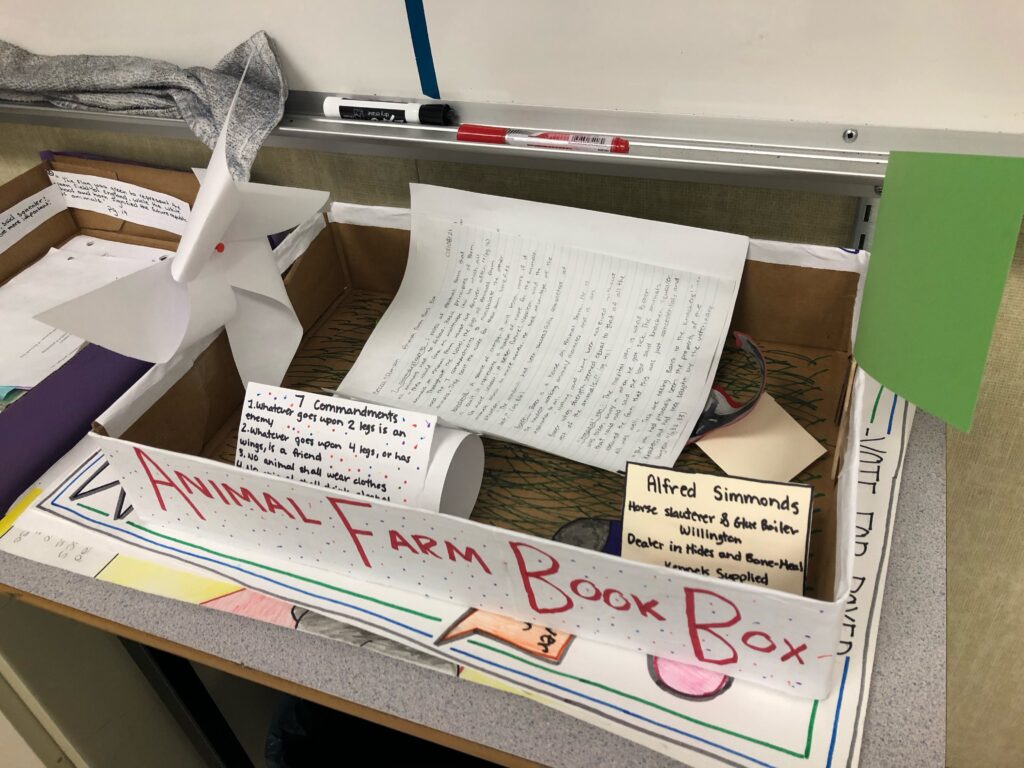Artifacts and Reflections
Reflection, an especially difficult task for most educators, is an ongoing process that leaves the educator fulfilled at the end of the day. Education is a cut-throat possession, and in order to be successful as a growing scholar, there needs to be constant reflection. The viewpoint into oneself allows the educator to be in and of itself, objectively critical or practice, style, and goals. Some can handle this type of constructive criticism and others fail to recognize the value that this has on ones career in education. With these thoughts on reflection present, it is worth mentioning my recent practice with a new type of project that I wanted to incorporate into a grade 10 English class: book boxes. These boxes acted as exact replicas of notebooks, but with the intent to have more in depth detail about some of the intricacies of the novel, as well as hold some key points to analyze on that are memorable and provoke some critical thinking out of the projects. Some of the students completed these projects and are displayed below:


Not only do these artifacts provide concrete evidence of ADST learning for the students, but also for the educator in real time. The main function, aside from creating an alternative notebook, is to provide students with a visualization in mind of significant objects, timelines, and artifacts in the novel, and to be able to explain them. Upon completion of the project, I found several positives and of course, improvements on my part as an educator. That students were able to explore their creativity, a space for them to do so, but also able to create a snap shot of the book in a way that makes sense to them. Although I found this project to be quite valuable, and as well to the positive feedback form my coaching teacher, I still trained my mind to come up with new and improved ways to make the project even bigger and better (actually intellectual to break from common phrase). As I apporach another class of similar ability and interest, I would adapt the project so that it could still leave room for that growth in creativity, but mainly giving them the time and space for discussion and critical thinking. The students thrived on deep, intelligent discussion as a class, so this was eye-opening to me to allow them to explore a creative side, however, it would have been magical to seen them enrich themselves to their strengths in conversation with grand ideas and developed thoughts. Another improvement to the project would be to, aside from students already working on skills of design processes, have students create their own version of a book box as an artifact. Nonetheless, students would still need to focus their knowledge on less summarization and synthesis of the novel, but students would naturally lead towards an innovative approach and design a project that would be critical and important in thought and idea in the midst of the project. Ultimately, there is so much to think about in reflection as an educator, but personally I enjoy the reflection time not because I am vulnerable in nature, but because I am growing as an individual which allows me to learn with the students.